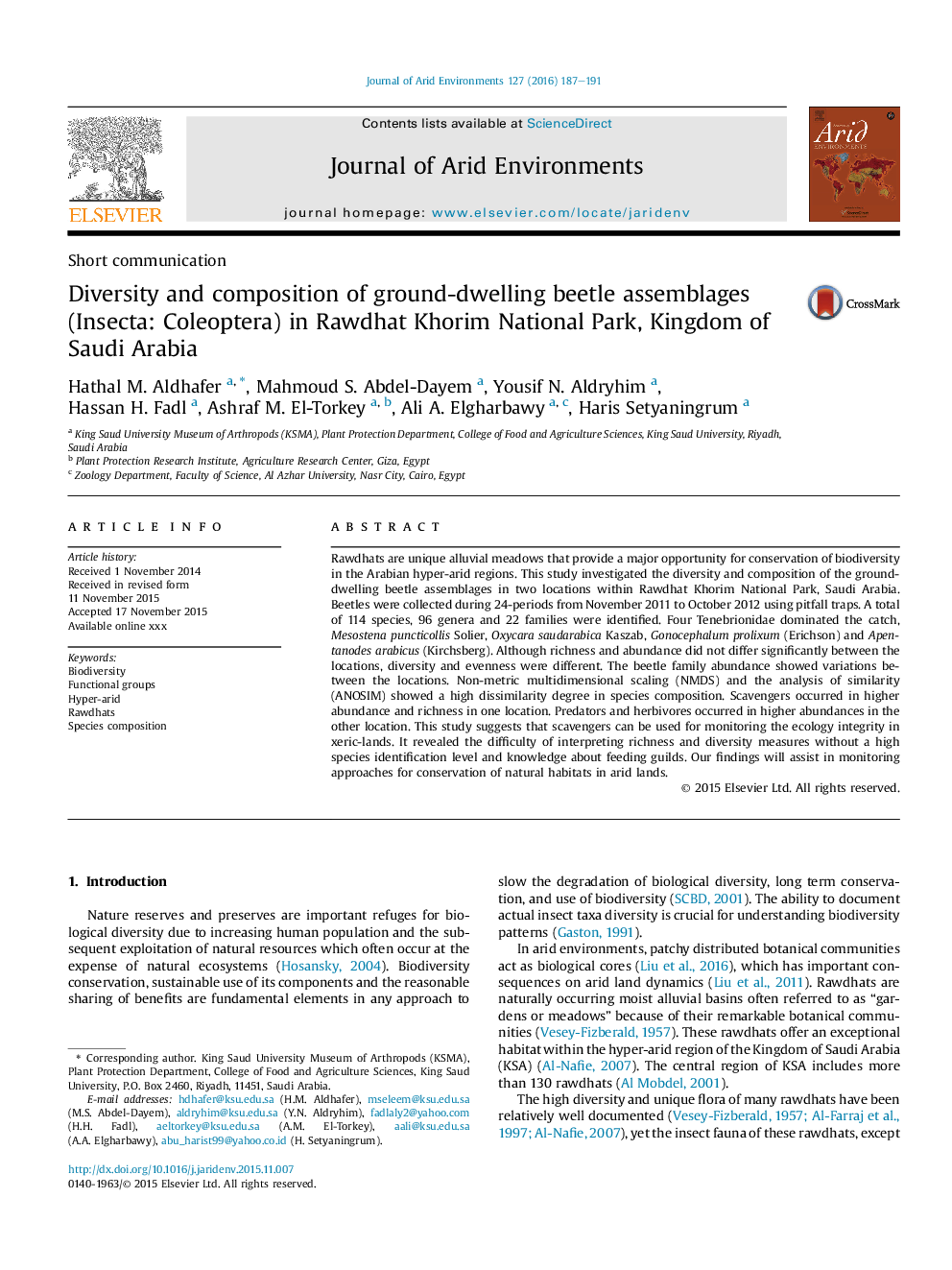| Article ID | Journal | Published Year | Pages | File Type |
|---|---|---|---|---|
| 6303229 | Journal of Arid Environments | 2016 | 5 Pages |
Abstract
Rawdhats are unique alluvial meadows that provide a major opportunity for conservation of biodiversity in the Arabian hyper-arid regions. This study investigated the diversity and composition of the ground-dwelling beetle assemblages in two locations within Rawdhat Khorim National Park, Saudi Arabia. Beetles were collected during 24-periods from November 2011 to October 2012 using pitfall traps. A total of 114 species, 96 genera and 22 families were identified. Four Tenebrionidae dominated the catch, Mesostena puncticollis Solier, Oxycara saudarabica Kaszab, Gonocephalum prolixum (Erichson) and Apentanodes arabicus (Kirchsberg). Although richness and abundance did not differ significantly between the locations, diversity and evenness were different. The beetle family abundance showed variations between the locations. Non-metric multidimensional scaling (NMDS) and the analysis of similarity (ANOSIM) showed a high dissimilarity degree in species composition. Scavengers occurred in higher abundance and richness in one location. Predators and herbivores occurred in higher abundances in the other location. This study suggests that scavengers can be used for monitoring the ecology integrity in xeric-lands. It revealed the difficulty of interpreting richness and diversity measures without a high species identification level and knowledge about feeding guilds. Our findings will assist in monitoring approaches for conservation of natural habitats in arid lands.
Related Topics
Physical Sciences and Engineering
Earth and Planetary Sciences
Earth-Surface Processes
Authors
Hathal M. Aldhafer, Mahmoud S. Abdel-Dayem, Yousif N. Aldryhim, Hassan H. Fadl, Ashraf M. El-Torkey, Ali A. Elgharbawy, Haris Setyaningrum,
